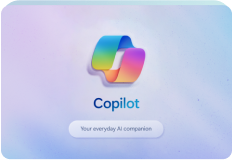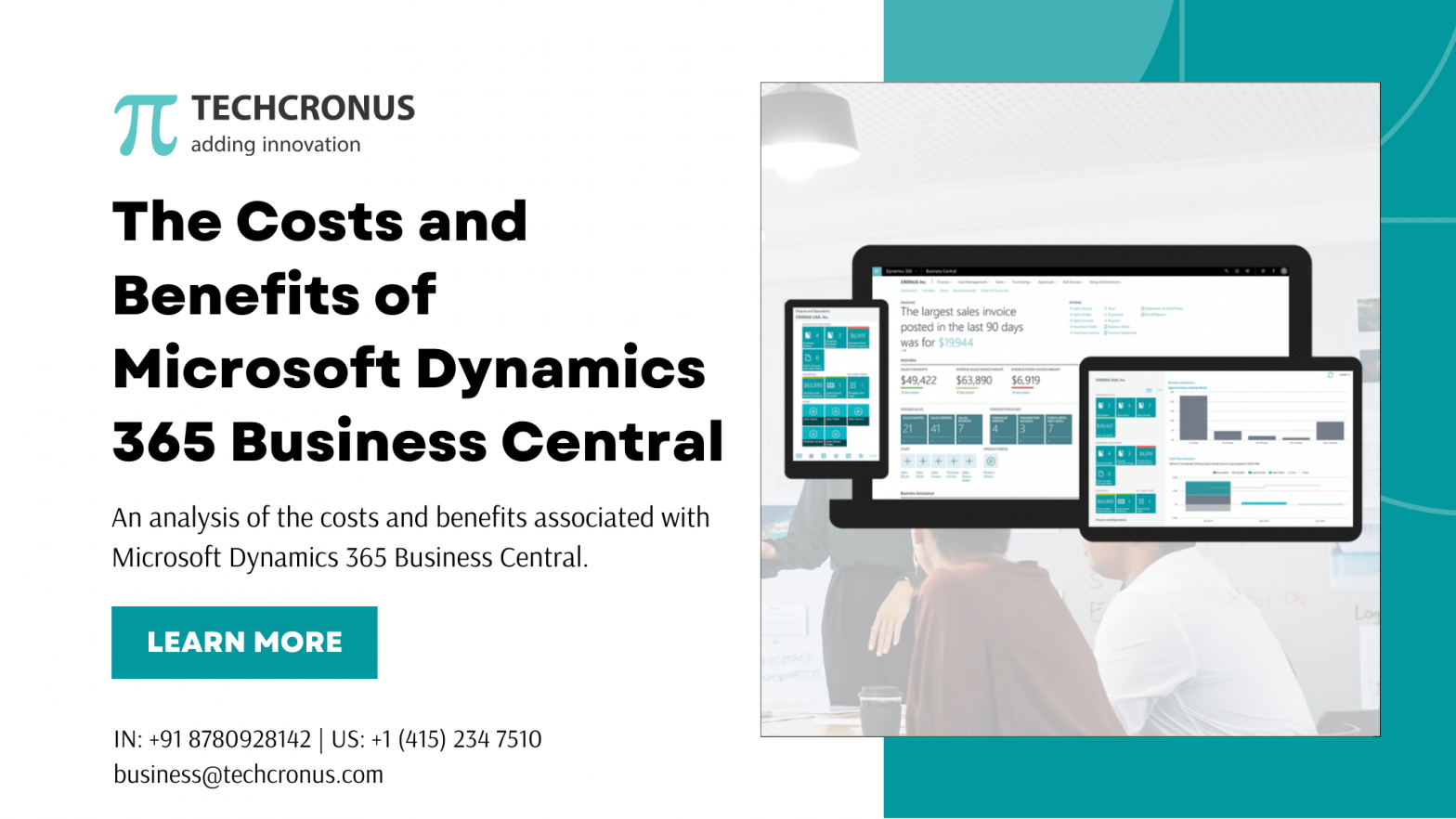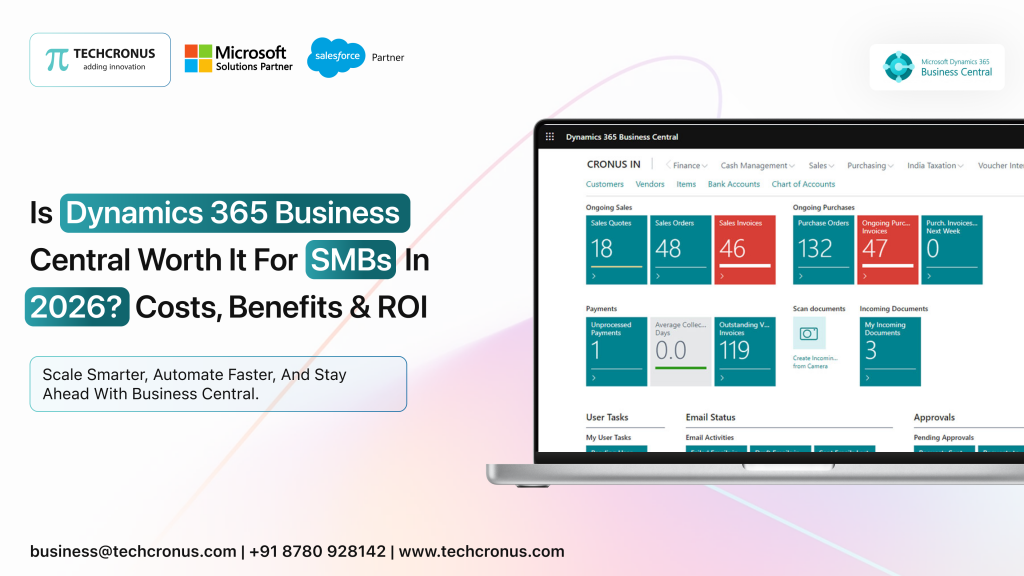Table of Contents
Finding strong solutions that can simplify operations, boost efficiency, and encourage growth is an ongoing pursuit for enterprises in the ever-changing world of business technology. A standout among enterprise resource planning (ERP) solutions, Microsoft Dynamics 365 Business Central caters to the complex demands of businesses across a wide range of verticals. For businesses to make an educated decision about moving to or deploying a new ERP, it is essential to weigh the benefits and cost of implementing Microsoft Dynamics 365.
What Are The Challenges SMBs Face With On-Premise ERPs?
Small and medium-sized businesses often grapple with the limitations imposed by traditional on-premises ERP systems.
Security Challenges
Vulnerability to Threats: Aging ERP systems often lack the latest security features and updates, making them vulnerable to cyber threats, data breaches, and malicious attacks. SMBs may find it challenging to protect sensitive data effectively without substantial investment in additional security measures.
Compliance Risks: Compliance with industry standards and regulations can be jeopardized by outdated systems, leading to potential legal and financial repercussions for SMBs.
Scalability and Flexibility Issues
Limited Growth Support: As businesses evolve, their ERP systems need to adapt to changing demands. Aging, on-premises solutions often struggle to scale up efficiently, limiting an SMB’s ability to expand its operations or enter new markets.
Rigidity: Outdated ERP systems typically offer limited customization and flexibility, making it difficult for SMBs to tailor the system to their unique processes and needs. This rigidity can impede innovation and agility within the organization.
Cost-Effectiveness Concerns
High Maintenance Costs: Maintaining an on-premises ERP system involves significant ongoing costs, including hardware maintenance, IT staff, and occasional upgrades. These expenses can be burdensome for SMBs with limited budgets. Compared to this, Microsoft Dynamics 365 Business Central cost is very low.
Obsolescence: Investing in updates or replacements for aging systems can be prohibitively expensive, yet failure to do so may lead to inefficiencies and competitive disadvantages.
Data Management and Integration Limitations
Data Silos: Aging ERP systems often result in data silos, where information is compartmentalized and difficult to access across the organization. This fragmentation can impede effective decision-making and collaboration.
Integration Challenges: Integrating outdated ERP systems with modern technologies and platforms is often problematic, limiting SMBs’ ability to leverage new tools and services that could enhance operational efficiency and customer experiences.
Adaptability to Evolving Business Needs
Inflexibility to Change: The business landscape is constantly changing, driven by technological advancements and shifting market demands. Aging, on-premises ERP systems are typically less adaptable to these changes, making it challenging for SMBs to remain competitive and responsive.
Limited Support for Remote Work: The shift towards remote and hybrid work models necessitates accessible and flexible ERP solutions. Outdated systems may not adequately support these modern working arrangements, potentially impacting productivity and employee satisfaction.
Costs Involved In Migrating To A Cloud-Based ERP
Migrating to a cloud ERP like Microsoft Dynamics 365 Business Central involves various costs and factors that businesses need to consider for a smooth transition and effective budgeting. These elements range from direct cost of implementing Dynamics 365 Business Central to more intangible factors affecting the long-term value and efficiency of the investment. Here’s a comprehensive overview:
Direct Costs
Subscription Fees: Cloud ERP solutions typically operate on a subscription model, where the cost of Dynamics 365 is based on the number of users and the level of functionality required. This recurring expense is a fundamental part of the budgeting process.
You can read more about how much does Dynamics 365 Business Central license cost if interested in knowing more about different tiers and licensing fees.
Implementation and Customization Costs: Implementation cost for Dynamics 365 Business Central involves initial setup fees, including data migration from the old system, customization to fit specific business processes, and integration with other tools and systems.
Training Costs: To ensure that staff can use the new system effectively, businesses need to invest in training. This can involve formal training sessions, online courses, or hiring external consultants.
Data Migration Costs: Moving data from an existing system to Dynamics 365 Business Central can be complex, especially if the data needs cleansing or transformation. This process might require additional tools or services.
Indirect Costs
Change Management: The cost of managing organizational change should not be underestimated. This includes communicating changes, managing employee expectations, and potentially altering business processes to align with the new system.
Downtime: During the migration, there might be periods when systems are not fully operational, which can impact productivity and revenue. Planning for and minimizing downtime is crucial.
Ongoing Support and Maintenance: While cloud ERP solutions like Dynamics 365 Business Central typically require less maintenance from the user’s side, businesses may still incur costs related to ongoing support, updates, and troubleshooting.
Factors Influencing Costs
Business Size and Complexity: The size of the business and the complexity of its operations significantly influence the cost. Larger organizations with more intricate processes will likely face higher customization and implementation costs.
Existing Infrastructure: The state of the business’s current IT infrastructure can affect migration costs. Businesses with outdated systems may require more significant data cleansing and migration efforts.
Level of Customization: The Microsoft Dynamics 365 implementation cost increases with the different level of customization required by each business.
Integration Requirements: The need to integrate Dynamics 365 Business Central with existing applications, platforms, and systems can add to the complexity and cost of migration.
ROI & Cost Savings After Implementing Microsoft Dynamics 365 Business Central
After implementing Microsoft Dynamics 365 Business Central, businesses have reported significant cost savings and financial benefits, as highlighted by a Total Economic Impact (TEI) study conducted by Forrester Consulting.
Return on Investment (ROI): The TEI study revealed an impressive ROI of 162% over three years for a composite organization with $15 million in revenue and 250 employees. Another report indicated an even higher ROI of 172% over the same period, showcasing the significant financial return businesses can expect from migrating to Dynamics 365 Business Central.
Net Present Value (NPV): The analysis demonstrated a net present value (NPV) of $288,000 over three years, considering both the benefits and costs associated with the migration. This highlights the substantial net financial gain businesses can achieve.
Operational Efficiency and Labor Savings: Implementing Dynamics 365 Business Central enabled organizations to avoid hiring an additional full-time equivalent (FTE) and a part-time equivalent in finance and operations roles, effectively reducing the need to increase staff by an average of 10%. This translates to significant labor cost savings and more efficient resource allocation.
Improved Flow of Operations: Customers reported an average improvement of 8% in the flow of operations. This improvement is attributed to better tools and more efficient workflows, allowing staff to focus on higher-value tasks and boosting overall productivity.
Reduction in Third-Party Reporting Costs: By leveraging Dynamics 365 Business Central and other Microsoft solutions like Power BI, organizations reported eliminating $44,000 in third-party reporting costs over three years. This reduction is due to the comprehensive visibility and reporting capabilities provided by Dynamics 365 Business Central, minimizing the need for external report generation.
Productivity Increases: Several departments within adopting organizations estimated productivity increases at 30%, thanks to automation functions within Dynamics 365 Business Central. Automating tasks like label creation saved approximately 20hrs/week that would have otherwise been spent on manual labor, also lowering the chance of labeling errors to near zero.
Payback Period: The average reported timeframe for recouping the initial investment in Dynamics 365 Business Central was just 7 months, indicating a rapid return on investment and highlighting the solution’s cost-effectiveness.
Thanks to Business Central’s easy interoperability, multiple companies have reported creating new sales channels, like e-commerce businesses.
With no degradation in service quality or user experience, businesses were able to expand their consumer bases to levels they couldn’t handle before. Additionally, businesses mentioned that having an efficient and agile ERP platform powered by Dynamics 365 BC helped them attract new customers.
Conclusion
From substantial ROI and labor savings to enhanced productivity and streamlined workflows, the benefits of Dynamics 365 Business Central are both measurable and impactful.
SMBs in particular, can leverage these advantages to not only keep pace with the demands of modern commerce but also to outstrip competitors and forge a path to sustainable growth. The flexibility, security, and comprehensive integration capabilities inherent in Dynamics 365 Business Central ensure that businesses are well-equipped to navigate the complexities of today’s market landscapes, all while maintaining a keen eye on fiscal responsibility.
However, to fully harness the power of Dynamics 365 Business Central, partnering with a seasoned solutions provider is key. Techcronus emerges as a premier Dynamics 365 partner in this regard, offering deep expertise and proven experience in implementing Dynamics 365 solutions.























